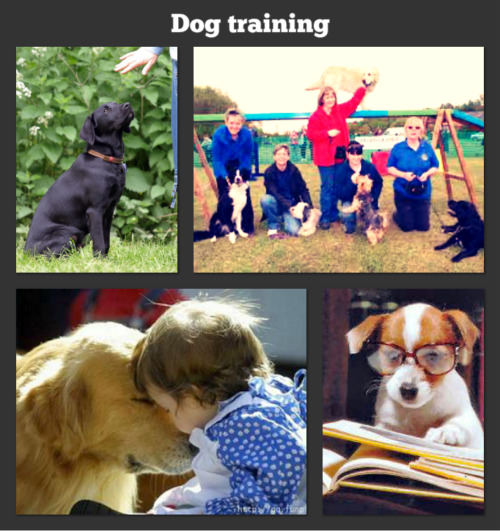A poster from our discussion forum asked:
"I have two dogs- - a Pit Bull and a Boston Terrier. I have read that you should not use the dog's name and [the word]"No" together so that the dog does not associate negative feelings with his name. So how do I tell one dog "No," without both feeling like they are both in trouble?
Situation: The Pit Bull is happily playing with her chew toy. The Boston Terrier is chewing on my sofa. How do I let the sofa chewer know that he is in the wrong (the Boston knows better. I have corrected him using the prong collar in the past and by just saying, "No," will get him to stop) without making the Pit Bull think that she is in trouble.
Adam replies:
Eye contact.
You don't need to worry about the other dog's "feelings." Just make eye contact with the dog you are going to correct.
If the dog is chewing on your couch you should NOT BE GIVING VERBAL CORRECTIONS. You should be giving leash corrections.
Chewing on the couch is a major infraction. We don't give $2 tickets for chewing on the couch. We give $200 tickets. Otherwise, your correction will have no meaning. (Keep the tab and training collar on the dog.)
You shouldn't be giving exclusively verbal corrections for this behavior. Period. Two, maybe three leash corrections for this behavior and your dog should never do it again. If he continues doing it, then you know that your corrections aren't firm enough. Also, you may want to try taking one link out of the pinch collar. It should be a snug fit.
I don't advise pet owners to ever use the dog's name in conjunction with the word "No."
That's all for now, folks!
Adam

 Safe Chew Toys for Your Dog
Safe Chew Toys for Your Dog
Safe Chew Toys for Your Dog
Safe Chew Toys for Your Dog
 How to Balance Your Pets Play and Relaxation
How to Balance Your Pets Play and Relaxation
How to Balance Your Pets Play and Relaxation
How to Balance Your Pets Play and Relaxation
 How To Use Vibration Dog Training Collars
All dogs need training at least, no matter how smart the do
How To Use Vibration Dog Training Collars
All dogs need training at least, no matter how smart the do
 Fun at the Park for You and Your Dog
Fun at the Park for You and Your Dog
Fun at the Park for You and Your Dog
Fun at the Park for You and Your Dog
 Dog Dudes: Surfing Dogs
Dog Dudes: Surfing Dogs
Dog Dudes: Surfing Dogs
Dog Dudes: Surfing Dogs